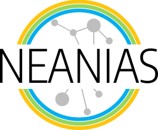La realizzazione della European Open Science Cloud (EOSC) richiede, oltre al coordinamento tra attori molto eterogenei, anche la creazione di servizi in cloud che rispondano alle esigenze della comunità della ricerca, seguendo il paradigma della scienza aperta, e che siano al contempo adattabili a settori scientifici diversi.
2020 has been a genuinely unusual year, but the NEANIAS Space team never lost its focus. We have been working really hard to walk the first steps towards the materialization of our foreseen collaborative research ecosystem in EOSC. We have had to face a fair number of technological and scientific challenges in the process, which often required out-of-the-box solutions to be overcome. It has been a fantastic experience that made us all give our best, a very enriching road that culminated with the first release of NEANIAS space services.
This article reports on the first release of the NEANIAS WP3 “Atmospheric Thematic services” and the software underlying each service, with special reference to the land-atmosphere interface. The atmospheric services are planned to deliver tools to enrich the workflows of a wide range of users from academic/research institutions to industrial stakeholders, to national institutional level institutes such as Civil Protection agencies. Interest can arise also from more regional governmental institutions such as Regions and Municipalities, especially in relation to detection and evaluation of gas release in the atmosphere.
The WP2 “Underwater Services” involves three out of nine thematic services of the NEANIAS project. The overall common goal is the development of thematic cloud services which support the analysis and data management of a large diversity of tasks within the fields of underwater, atmosphere and space research, development and easy to handle, fair to use and platform independent. We present Bathymetry mapping from acoustic data service implementation, Seafloor Mosaicking from Optical Data and Seabed Classification from Multispectral, Multibeam Data services.
NEANIAS Project launches its first Open Call for Atmospheric, Underwater and Space research. In this article, we present everything you need to know about the call.
The University of Malta (UoM), the University of Catania (UNICT) and the Politecnico di Torino (POLITO) will participate in the validation of the NEANIAS Space services.
The vision, the challenges and the expectations about the project and its value propositions by Ubiwhere, one of NEANIAS partners. The article is written in Portuguese.
NEANIAS has officially released its first version of space services. These services tackle some of the most important needs of the space research community, focusing on three main areas: data management and visualization (SPACE-VIS), map making and mosaicking (SPACE-MOS) and pattern and structure detection (SPACE-ML).
Prof. Paraskevi Nomikou, Prof. Kalliopi Baika and Prof. Karantzalos Konstantinos are the 3 of the 4 Guest Editors of the MDPI Special Issue "Virtual Reconstruction and Visualization: Serving Geoheritage, Geotourism and Resilience to Geohazards."
The first Open Call for the NEANIAS project will be launched on February 8, 2021 in order to utilize the NEANIAS services, develop novel technologies and strengthen European researches in the Atmosphere, Underwater and Space service sectors.

